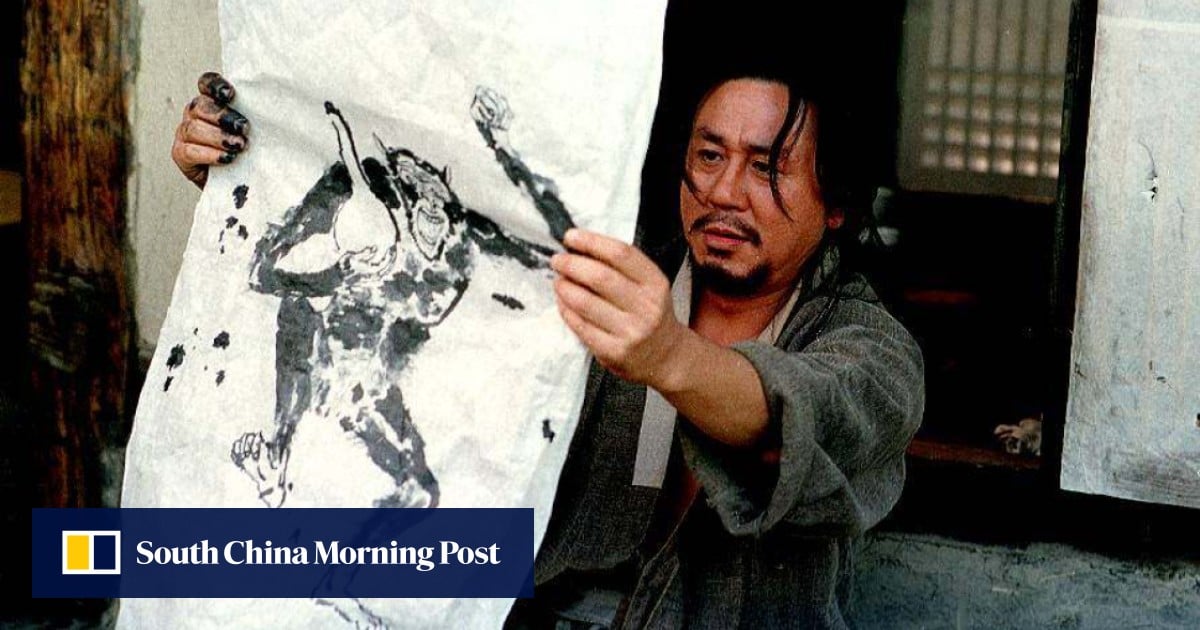Easier to appreciate than to explain, perhaps, the accomplishments of the lonely, tortured artist will never grow old.
10 iconic looks in Asian cinema, including that Bruce Lee jumpsuit
10 iconic looks in Asian cinema, including that Bruce Lee jumpsuit
Here are 10 of our favourite depictions of artists, and the art that they create, in cinema from across the region.
1. Terrorizers (1986)
Winner of the Golden Horse Award for Best Film, Edward Yang De-chang’s postmodern mystery owes more than a passing debt to Michelangelo Antonioni’s swinging 60s-set Blow-Up (1966).
Ma Shao-chun plays a young photographer who accidentally snaps a beguiling young beauty (Wang An) as she flees a crime scene, only to become increasingly obsessed over the enigmatic portrait he has created.
In Yang’s typically meandering style, the lives of numerous, seemingly unconnected individuals are drawn into the story, including Cora Miao Hin-yan’s depressed writer, and explanations remain elusive throughout.
Yang and his young protagonist’s shared obsession with observing everyday life through an unobtrusive lens proves endlessly involving.
2. Dreams (1990)
Perhaps the most visually striking of these shorts is “Crows”, during which a young man wanders through the turbulent oil paintings of Vincent van Gogh. This brilliantly animated sequence was created for Kurosawa at Industrial Light and Magic, while George Lucas and Steven Spielberg guided the United States co-production to fruition.
Martin Scorsese, another lifelong Kurosawa devotee, stars as the tormented Dutch painter, teetering on the brink of madness.
3. Yumeji (1991)
In the final instalment of Japanese maverick director Seijun Suzuki’s loose Taisho Trilogy, wild man of rock Kenji Sawada assumes the role of artist and poet Yumeji Takehisa.
The convergence of these three fiercely individual voices for a psychedelic dramatisation of an imagined chapter in Yumeji’s life understandably results in a bizarre and frequently disorientating cinematic experience.
We follow the artist into his own dreams, where he is murdered by the husband of a would-be lover. As with all of Suzuki’s best films, however, the chaotic disregard for narrative coherence is central to the film’s enduring appeal.
4. The Pillow Book (1995)
British artist and filmmaker Peter Greenaway came to Hong Kong for a visually ravishing and erotically charged drama about a Japanese woman on a journey of sexual and artistic discovery.
Vivian Wu Junmei stars as Nagiko, who arrives in the city to escape her controlling husband. She embarks on a series of affairs, during which she encourages her lovers to write on her skin.
Upon meeting Ewan McGregor’s translator, however, the tables are turned, and Nagiko uses his body as her “pillow book”, as she indulges in her dual passions of calligraphy and carnal pleasure.
5. Tell Me Something (1999)
This violent psychological thriller from director Chang Yoon-hyun was one of the first Korean films to find success in the West, swept up in the Asia Extreme movement that coincided with the new Korean wave.
Taking its cues from hits such as The Silence of the Lambs (1991) and Seven (1995), it’s also the story of a flawed detective (Han Suk-kyu; left) on the trail of a serial killer who claims victims as part of a grotesque artistic endeavour.
While not for the faint of heart, the film puts a successfully ghoulish spin on the frustrated artist motif.
6. Chihwaseon (2002)
From Im Kwon-taek, one of the most revered and prolific filmmakers ever to come out of the Korean industry, comes this stately and poetic biopic about Jang Seung-eop, a rags-to-riches painter from the era of Joseon dynasty rule, widely credited with changing the course of Korean art sensibilities.
Brilliantly portrayed by Choi Min-sik, Jang – better known as “Owon” – wrestled throughout his life with drink and sexual promiscuity, claiming he was unable to paint without an abundance of both.
As the film shows, he was revered by the court for his ability to mimic any artist, before eventually honing his own style.
7. Zhou Yu’s Train (2002)
Twice a week she travels by train from her home in Sanming to Chongyang to see him, but complications arise when, on one such journey, she catches the eye of a fellow passenger, played by Sun Honglei, who is instantly smitten.
Torn between the two men, Zhou Yu’s emotional state becomes dangerously strained, echoed by the film’s increasingly fractured chronology, as a second woman, also played by Li, emerges through the kaleidoscopic confusion.
8. Achilles and the Tortoise (2008)
These culminated with this stubbornly surreal, bafflingly inconsistent, but ultimately rather beguiling story of a painter willing to sacrifice everything for his art.
Kitano, himself an accomplished artist, whose paintings are regularly on display in his films, succeeds in skewering the heart of artistic pretension while simultaneously lampooning its inherent absurdity.
9. Portrait of a Beauty (2008)
Another Joseon-era painter is the subject of Korean director Jeon Yun-su’s historical romance, albeit with a playful twist.
Adapted from Lee Jung-myung’s bestselling novel Painter of the Wind (2007), Portrait of a Beauty suggests that controversial artist Hyewon was, in fact, a woman passing herself off as a man in an effort to preserve her family’s honour.
Kim Gyu-ri plays the artist, who is pressured into the deception by her disgraced father, only for Hyewon to also fall foul of the authorities because of the erotically charged nature of his/her work.
10. Miss Hokusai (2015)
Voiced by Anne Watanabe, O-Ei, as the young woman is known, lives with her father, and because of his drinking and womanising, is often left to finish his paintings herself.
Adapted from the manga by Hanako Sugiura, the film beautifully blends historical fact with elements of the fantastical, as depicted throughout the woman’s dazzling work.

